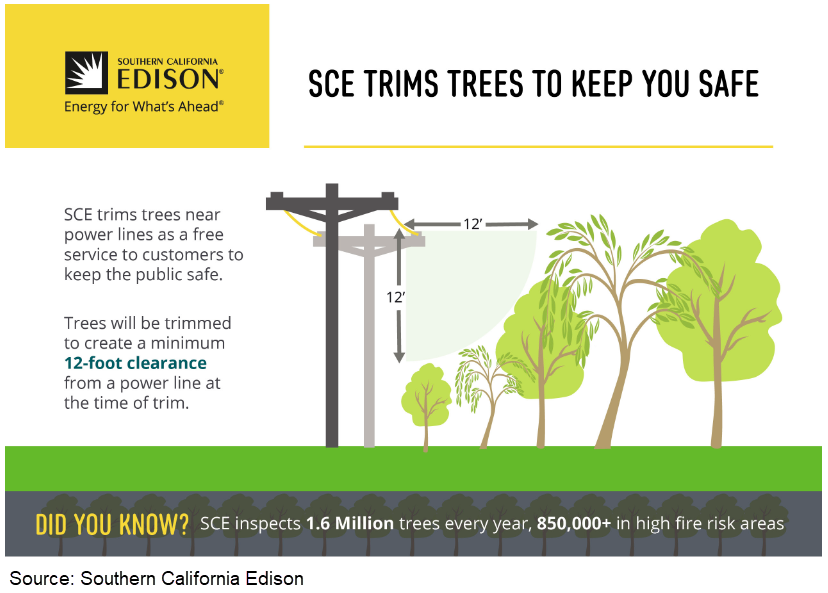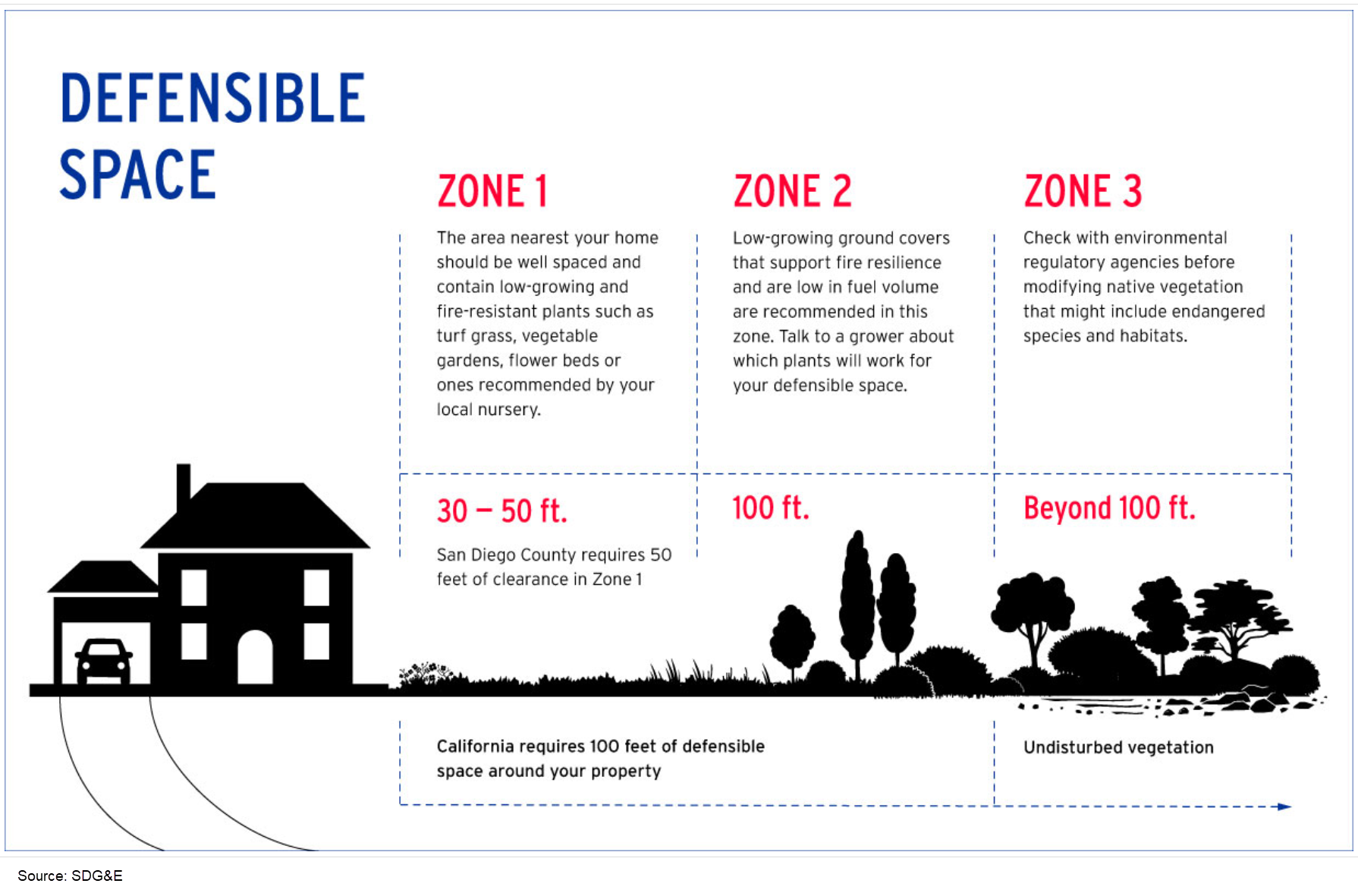This report was coauthored by Tom Lienhard, an executive consultant. Tom Lienhard retired from Avista Utilities in 2021 as an efficiency engineer after more than 25 years with the utility. His expertise as a mechanical engineer and experience with facilities management have given Tom a unique understanding of customers’ needs related to metering, distributed generation, and energy usage.
The severity of wildfires is increasing in the US and Canada, posing a growing risk to utilities and their customers. At the same time, utilities are also seeing more customers move to areas with high fire risk. Because of these changes, utilities will need to do more to maintain the same level of safety.
Utilities tend to be risk averse—many completely avoid talking about wildfires in their customer communications. But utilities should be proactive in positioning themselves and their brand in the context of managing wildfire risk and consequences. Tell your customers what you’re doing to help prevent wildfires and why. And show them how they can play a part in reducing and preparing for wildfires. They’ll be more prepared in the case of a fire, and you’ll have presented your utility as a proactive leader in reducing fire risk.
The risks of wildfires to utilities and their customers
Wildfires put utilities and customers at risk of shutoffs, disruptions, costs, and health and safety impacts. All of these can increase when fires are more severe. It’s critical to communicate early and often with your customers about wildfire risks, including those outlined here, and what you’re doing to confront it. Helping people understand all the risks and impacts will help grow support for utility and customer mitigation strategies.
Increased frequency of power shutoffs
Utilities may implement a public safety power shutoff (PSPS) to proactively reduce the risk of wildfire. This is when a utility intentionally shuts off power to certain areas to prevent electrical equipment from igniting fires in high-risk conditions.
As the risk of fire increases, power shutoffs may become more frequent. And customers will need to have a plan for when the power goes out.
Disruption of power supply
Wildfires can damage electrical infrastructure and lead to power outages for customers. These outages can last for extended periods of time and negatively affect daily life, business, and critical services such as healthcare.
Safety concerns for customers’ homes
Customers living in high-risk fire areas face the danger of wildfires damaging their homes and communities. They may be forced to evacuate, risking their safety and potentially losing their properties. Utilities can help customers understand how they can use vegetation management on their own property to help mitigate the risk of losses.
Health impacts
Wildfires release harmful pollutants like smoke and particulate matter into the air. They can have adverse health effects on people, especially those with respiratory conditions.
Financial losses for customers
Customers might suffer financial losses due to property damage, evacuation costs, and increased insurance premiums in high-risk fire areas.
Increased costs for utilities
Utilities bear much of the financial burden of wildfire-related damages. When a utility is at fault, these costs can include repairing or replacing infrastructure, compensating affected customers, and potential legal liabilities. These costs can be high and may affect utility rates for customers.
How you can help customers prepare for and respond to wildfires
As wildfires become more severe, utilities need to have a crisis communications campaign ready to go. Effective communications should speak to what customers care most about. For example, E Source market research from 2023 shows that business customers value energy reliability, effective emergency communications, and trustworthiness the most in a utility.
And among residential customers, we found that the top drivers of customer satisfaction were affordable rates, the utility being trustworthy, and the utility having a positive image. A good wildfire communications strategy can demonstrate all of these qualities to your customers. Show that they can trust you to mitigate and respond to wildfire emergencies and maintain reliability and low rates.
Establish community partnerships
Utilities can work with community organizations, fire halls, and other stakeholders to strengthen the utility’s own wildfire mitigation efforts.
Community and media relationships. Along with making information easily available on their websites, utilities are using social media, bill inserts, newsletters, fairs, and community events to reach customers. On these channels, utilities tend to deliver messaging about:
- What utilities are doing to reduce wildfire risks
- What customers can do to prepare, stay safe, and learn more
Building positive relationships with the media can also help you spread safety information more quickly and educate customers year-round about wildfire prevention.
In 2022, PG&E ran a From the Underground Up media campaign to show how the utility is moving 10,000 miles of power lines underground as a wildfire risk reduction measure. The utility ran the ad daily on broadcast, cable, over-the-top, and digital for six months.
The ad had more than 7.3 million views on YouTube and boosted PG&E’s customer satisfaction scores. During the campaign, the amount of positive news about PG&E returned to levels seen before the fires.
PG&E wildfire reduction video
On its Community Fire Safety Program website, SDG&E features its local partnerships. The utility said it works with 40 groups “to make sure the right communication measures are in place in the event of an emergency situation.” SDG&E says that it works with public and private organizations to “develop plans and warning programs” for wildfire notifications. And it works with nonprofit organizations to “educate and prepare residents” for wildfires.
For more examples of utility communication campaigns around wildfires, see the Ask E Source answer How are utilities building engagement around wildfire safety and prevention?, available to members of the E Source Business Marketing, Corporate Communications, and Residential Marketing Services.
Community resilience hubs. Resilience hubs provide resources and physical space for communities before, during, and after extreme weather events and other emergencies. During power outages, resilience hubs typically offer a safe place to charge phones or power medical equipment while offering cooling or heating relief.
Resilience hubs are valuable during wildfire events because they have on-site power systems that can reliably sustain operations during an extended planned or unplanned power outage. By partnering with resilience hub organizers, utilities can provide critical community support in ways that also align with the utility’s goals.
Resilience hubs use established and trusted neighborhood facilities to provide year-round programming that improves the quality of life and resiliency of local communities and vulnerable populations. The City of Seattle uses its Community Emergency Hubs to facilitate neighborhood communications during emergencies. It designated 135 locations that people can use as central gathering places after a disaster.
For more information about how to develop resiliency hubs, check out our report Should your utility invest in community resilience hubs?, available to members of the E Source Demand-Side Management Service.
Develop a comprehensive wildfire communications strategy
As part of your wildfire mitigation plan, create a dedicated resource on your website explaining what you’re doing to mitigate wildfires and why. Provide regular updates on your website and make it easy for customers to sign up for alerts or notifications.
When an emergency happens, have a crisis communications plan ready to use across channels. Being transparent helps build trust with your customers and show that you’re committed to a reliable and affordable grid.
Build engagement and understanding around PSPS events. Develop a resource on your website that explains how and why you use PSPS events. You should also create a resource to update with PSPS event information, like a map or infographic, and direct customers to sign up for alerts.
Southern California Edison (SCE) explains why it uses PSPS events and when they might happen on its PSPS FAQs page. The utility also directs customers to sign up for alerts to know when the utility is planning for PSPS events and other outages. PG&E has a similar PSPS web page explaining why the utility uses them and how to sign up for alerts.
On its Wildfire Safety page, SDG&E has a PSPS forecast that shows customers how likely a power shutoff will be in the next seven days. An infographic shows whether a PSPS is not expected, possible, or likely for each day. If there’s a PSPS in the forecast, customers can see if the outage will affect their area on the utility’s PSPS Dashboard.
SDG&E’s PSPS forecast
Idaho Power provides a similar PSPS forecast and map by area on its PSPS Event Information webpage, including estimated shutoff time, duration, and customers affected.
Empower customers to get backup generation to prepare for PSPS events. As wildfires become more frequent and destructive, utilities are implementing more power shutoffs to prevent or reduce the spread of wildfire. Power shutoffs can disrupt important customer energy systems like air-conditioning, refrigeration, and internet. This means customers have to come up with their own backup generation plans.
Some utilities have started offering more incentives for customers to buy backup generators. It’s also important to help customers understand what size backup generator they might need.
Do customers use a well? Which circuits in their home are the most important to keep on if the power goes out? Utilities should address questions like these as they help customers understand how the backup generators work and when to plan for using it.
SDG&E has a comprehensive Electric Generators web page that explains how generators work and what options customers have. The page includes a Generator Calculator (PDF) sheet for customers to figure out the best type of size of generator based on their needs.
PG&E offers Generator & battery rebates to customers who are in areas with high fire risk. Customers can get up to $500 in combined incentives to buy a qualifying portable gas generator or portable battery. The website also includes an informational video about how backup power can protect customers’ medical equipment and supplies.
Create a wildfire FAQ on your website. Your wildfires FAQ is a good place to address any myths around wildfires and help customers understand what drives wildfires and how the utility and its customers can reduce the risks.
The most common causes of wildfires can vary depending on the region and specific factors like geography and environmental conditions. In some regions, human-caused fires may be more common, while lighting strikes might be the main cause in another. Note that states and other agencies have varying degrees of success in identifying the cause of each fire.
You can use your FAQ to explain the common causes in your own territory. These are some of the most frequently cited causes:
- Human activities. People cause many wildfires. These can result from activities such as leaving campfires unattended, burning debris, discarding cigarettes, committing arson, or having equipment malfunctions.
- Lightning. Lightning can ignite vegetation and start fires, especially in areas with frequent thunderstorms.
- Volcanic activity. Volcanic eruptions can lead to wildfires. The intense heat and lava from an eruption can ignite surrounding vegetation.
- Coal-seam fires. Coal-seam fires occur when underground coal deposits catch fire and burn for extended periods. These fires can spread to the surface and cause wildfires.
- Meteor impacts. In rare cases, wildfires can start from meteor impacts. The heat generated by a meteor strike can ignite surrounding vegetation.
Direct Energy has a Wildfire Information page on its website that provides basic information about wildfires, how they start and spread, and how to plan for an emergency. This type of informational resource is a place where utilities can address any myths or misconceptions about wildfires, but also show what the utility is doing to be proactive.
Target your communications. Areas like rural communities have unique challenges and needs around wildfires. They’ll need to know different information than customers in urban communities during a wildfire. Provide tailored communication to build trust with these communities and help them better prepare for and respond to wildfires.
Rural communities tend to be more remote and therefore farther away from emergency services. This means that fires could burn for longer and cause more damage than in other areas. Rural areas can also be harder to get to because they have less infrastructure to maintain roads or remove snow. And water resources may be less readily available to fight fires.
On its Rural Communities and Fire web page, the Chumstick Wildfire Stewardship Coalition explains several strategies to help rural areas manage their wildfire risk. If your utility services rural areas, communicate these types of strategies on your website or in direct customer communications:
- Regularly manage vegetation like brush and debris on farms and ranches
- Protect and safely store hay and other flammable supplies
- Store farm equipment in a protected area
- Avoid burning on days with higher fire danger
- Identify routes and refuge areas for farm animals
Show customers how all property owners are responsible for wildfire mitigation
While utilities and railroads are often involved in vegetation management for wildfire reduction, they’re not the only ones responsible for wildfire prevention. Vegetation management is a shared responsibility among various stakeholders, including government agencies, landowners, homeowners, and communities.
Develop a clear strategy for how you’ll manage vegetation to combat the increased severity of wildfires. Communicate with your customers about what your utility is doing to manage vegetation. And show customers how they can connect with your wildfire mitigation by managing their own vegetation.
Utility-side vegetation management. Beyond your regular communications, create a resource on your website where customers can learn about how the utility is using vegetation management to reduce the risk of wildfires and outages. This helps customers understand why the utility is doing it, what to expect, how it helps them.
SCE has a Power Lines & Trees web page that explains how and why the utility manages vegetation to keep customers safe. It explains how the utility will communicate with customers about tree trimming and what customers should expect.
SCE tree trimming infographic
The web page includes a live map and infographics showing the space needed around utility equipment. SCE also created an information Vegetation Management FAQ (PDF) document to provide a quick resource on how vegetation management works and why the utility is doing it.
For more information on how you can use data science to help mitigate wildfire risk, see the E Source blog Utilities and wildfire mitigation: The challenge of people, policy, and precipitation.
Customer-side vegetation management. Show your customers that they can have a role in managing the risk of wildfire on their own property: explain how they can make their property less burnable and how these strategies align with the utility’s own vegetation management activities.
Many customers only think of vegetation management as the utility cutting down half of their tree to prevent it from hitting the power lines. A defined communications strategy will help customers better understand why the utility might do things like tree removal on or near customer properties.
On its Wildfire Emergency Preparedness web page, SDG&E explains how customers can manage vegetation on their property to reduce the risk of wildfire. The utility also recommends other strategies that customers can use to make their homes more fire resistant, like clearing gutters and building with certain materials.



